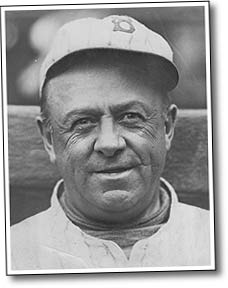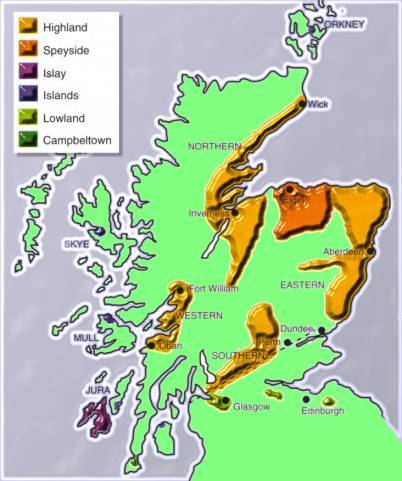THE 1900 CARDINALS ... part 2

McGraw and Robinson are warmly greeted by the St. Louis "cranks" (fans), but after the good start, the team quickly starts to have a sub par season. The pitchers, including Young seem to be pitching alright but the team keeps losing games. Just like today, the writers are making excuses such as "Cy Young is pitching better than his record would show". There is a lot speculation that there is strife on the team. Apparently, in the years past, McGraw has gotten into it with Tabeau and Burkett many times. McGraw and Patsey claim to be getting along just fine. McGraw is quoted as saying "Tabeau came to me when I got there and said 'Mac, you are captain and I want you to go right ahead and do what you think best' but I don't want to assume authority"
By the time the warm winds of June are blowing, the Perfectos are heading east for a road trip in 5th place. McGraw misses some time due to an injury and writers are saying the "pitchers are not in good shape". McGraw, being the cantankerous man that he is, gets thrown out of games from time to time with his wild temper. This is nothing new or unusual. Young supposedly is suffering rheumatism in his shoulder and Tabeau is looking to bolster the pitching lineup. Even though it is starting to look bad for the Perfectos, some writers still pick them and Brooklyn to lead the league. The Baltimore writer, who is in eternal love with John McGraw writes a column about how players like McGraw are the type that bring pennants to their teams.
 By the end of June, rumors are rampant about discourse in the clubhouse between McGraw and Burkett, though the official word is everything is fine. A June 23rd headline reads "Last in Race - Perfectos are National League's Tail Enders". They take 8 losses in a row. McGraw is still out with injuries and doesn't even bother to show up at the games. He spends his time at the racetrack instead. The Baltimore writer reveals McGraw's great contract, both the amount of money he is making and the fact that the reserve clause is scratched out. Finger pointing is now in full swing. The Baltimore writer blames everything on Tabeau and Robison for not letting McGraw run the show. The New York writer blames the Robisons for blindly throwing money at McGraw and others in order to "buy" the Pennant. The St. Louis writer is blaming the players for not playing. The official word though, is there is no strife in the clubhouse.
By the end of June, rumors are rampant about discourse in the clubhouse between McGraw and Burkett, though the official word is everything is fine. A June 23rd headline reads "Last in Race - Perfectos are National League's Tail Enders". They take 8 losses in a row. McGraw is still out with injuries and doesn't even bother to show up at the games. He spends his time at the racetrack instead. The Baltimore writer reveals McGraw's great contract, both the amount of money he is making and the fact that the reserve clause is scratched out. Finger pointing is now in full swing. The Baltimore writer blames everything on Tabeau and Robison for not letting McGraw run the show. The New York writer blames the Robisons for blindly throwing money at McGraw and others in order to "buy" the Pennant. The St. Louis writer is blaming the players for not playing. The official word though, is there is no strife in the clubhouse. As July and August wind up, things have gone from bad to worse. The finger pointing gets worse, the team is in the dumps, and Tabeau is taking a lot of heat. They are now in 6th place and attendance is dropping off. On August 25th, Patsey Tabeau resigns. It is not clear whether he quit or was fired, but it doesn't matter, neither he nor anyone else has any control over the team. McGraw is offered the manager's job but turns it down. "Management was offered to McGraw but he refused to accept responsibility for the thoroughly demoralized team under any condition" is written in the Sporting News. A September headline reads "Playing Awful Ball - fortunate to not end up last - dissipation is responsible for St. Louis team's poor performance". Dissipation was a term used to describe drunkenness and intemperance. One nameless player is quoted as saying "There is no use to try to duck it. Booze is the cause of our being where we are... I feel ashamed of myself when I draw my salary". It is reported that another player was seen standing on Grand Ave. at 7 am Sunday morning selling newspapers. Apparently, he had been out "dissipating" all night and ended the evening by "liberating" newspapers from the paperboy and temporarily going into business for himself.
As July and August wind up, things have gone from bad to worse. The finger pointing gets worse, the team is in the dumps, and Tabeau is taking a lot of heat. They are now in 6th place and attendance is dropping off. On August 25th, Patsey Tabeau resigns. It is not clear whether he quit or was fired, but it doesn't matter, neither he nor anyone else has any control over the team. McGraw is offered the manager's job but turns it down. "Management was offered to McGraw but he refused to accept responsibility for the thoroughly demoralized team under any condition" is written in the Sporting News. A September headline reads "Playing Awful Ball - fortunate to not end up last - dissipation is responsible for St. Louis team's poor performance". Dissipation was a term used to describe drunkenness and intemperance. One nameless player is quoted as saying "There is no use to try to duck it. Booze is the cause of our being where we are... I feel ashamed of myself when I draw my salary". It is reported that another player was seen standing on Grand Ave. at 7 am Sunday morning selling newspapers. Apparently, he had been out "dissipating" all night and ended the evening by "liberating" newspapers from the paperboy and temporarily going into business for himself.In the middle of September, McGraw announces that he will be with a new team in a new league in Baltimore for the 1901 season. He declines to tell which league it will be, but when a reporter asks if will be with the Quinn-Anson group (the American Association), he just laughs leading everyone to conclude he's in bed with Ban Johnson and the American League. McGraw also states that he had told the Robisons that was his intentions right from the start, which is why he had the reserve clause scratched out of his contract.
In the October 20th issue of Sporting News, a headline reads "Salary Withheld - only four St. Louis Perfecto players paid in full". Those paid are John McGraw, Wilbert Robinson, Cy Young, and Patsy Donovan.
In the November 17 issue, it is announced that Muggsy and Robby are owners of the New American League Baltimore Orioles.

Of course, the sports writers of the time are no different than they are today. They are on the outside looking in and we really never seem to get the whole story as it happens. Some said McGraw was offered the manager's job right away but declined it because he knew that by the next year he would be out of town, hopefully in a new league back in Baltimore. We know for sure that he was offered the job in August and declined to take it. The Baltimore writer is steadfast in his belief that were McGraw running the team, they would have still been in contention. He further states that the Robisons and Tabeau had no desire to play McGraw's brand of "scientific" ball (a term he used often throughout the year when referring to McGraw). He goes so far as to claim that Tabeau would rather see the team lose than to see the team win and have McGraw get the credit. Some say that the clubhouse feud is between McGraw and Burkett. We know that the Robisons withheld salaries from everyone except McGraw, Robinson, Young, and Donovan, so you would have to believe that the Robisons thought everyone else was dogging it. However, I came across one headline saying that the Robisons thought Muggsy and Robby were "counterfeits".
If you look at the stats, both McGraw and Burkett had very good offensive totals. Burkett was 3rd overall in batting average, while McGraw was 5th. OPS (on base percentage/slugging percentage) saw McGraw 3rd and Burkett 4th. McGraw was number one in the league with a .505 on base percentage. Throughout the offensive stats, the Perfectos had many players in the top 5. The team batting average was second only to Brooklyn with a .291. The pitching wasn't great, but it was middle of the road. With a team ERA at 3.75, they were fourth in the league. We can gather from the writings that the team was totally dysfunctional. Players were drinking and carousing, Tabeau quit, Muggsy didn't want to manage. Whether Patsey and Muggsy struggled for authority or they both deferred to each other, the result was the same, leadership and discipline were all but nonexistent. It seems that the 1900 Cardinals were a case of having all the right pieces, but none of them fit together. A classic "clash of egos". Maybe in the end, they needed Joe Torre for manager.























